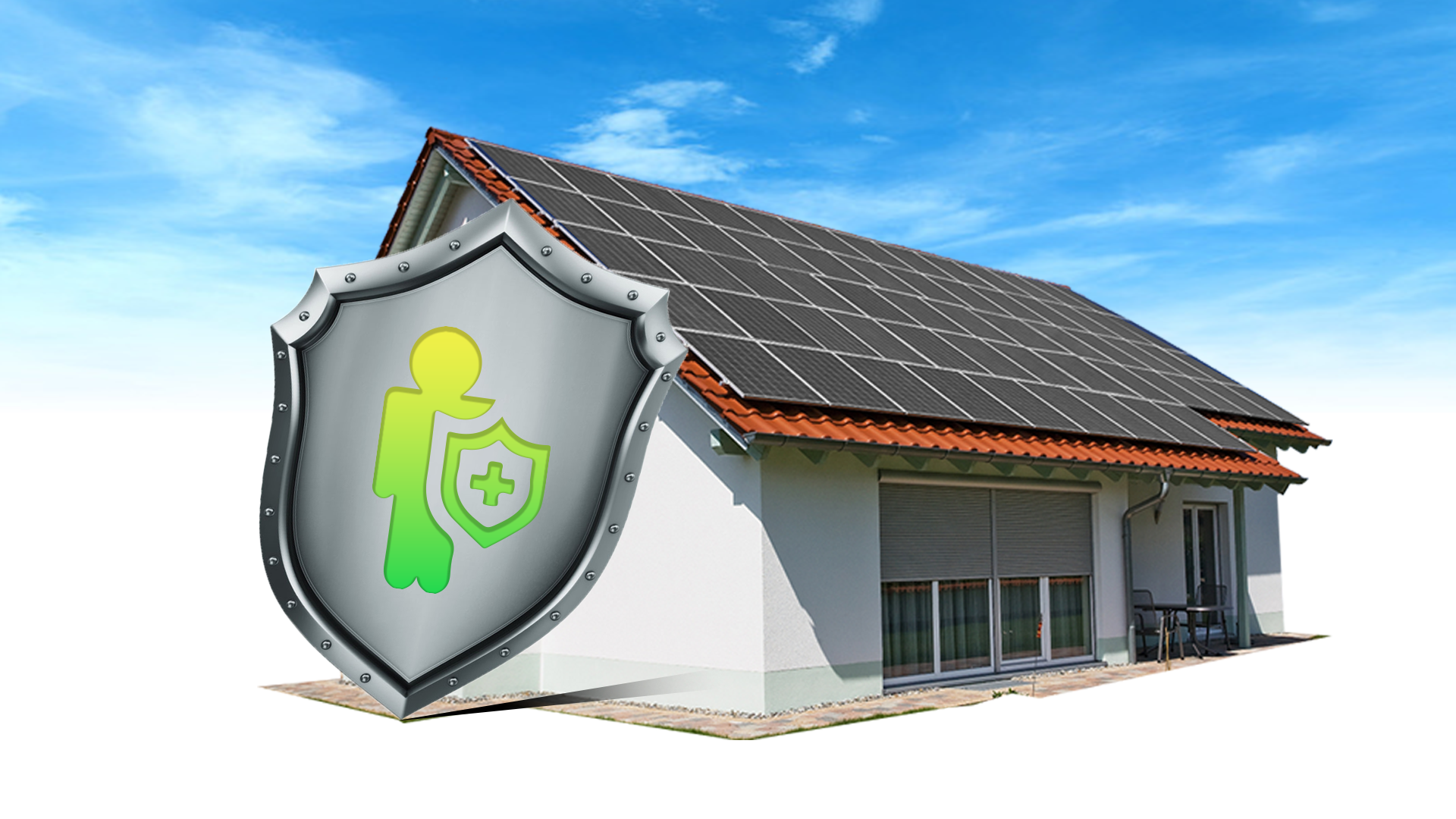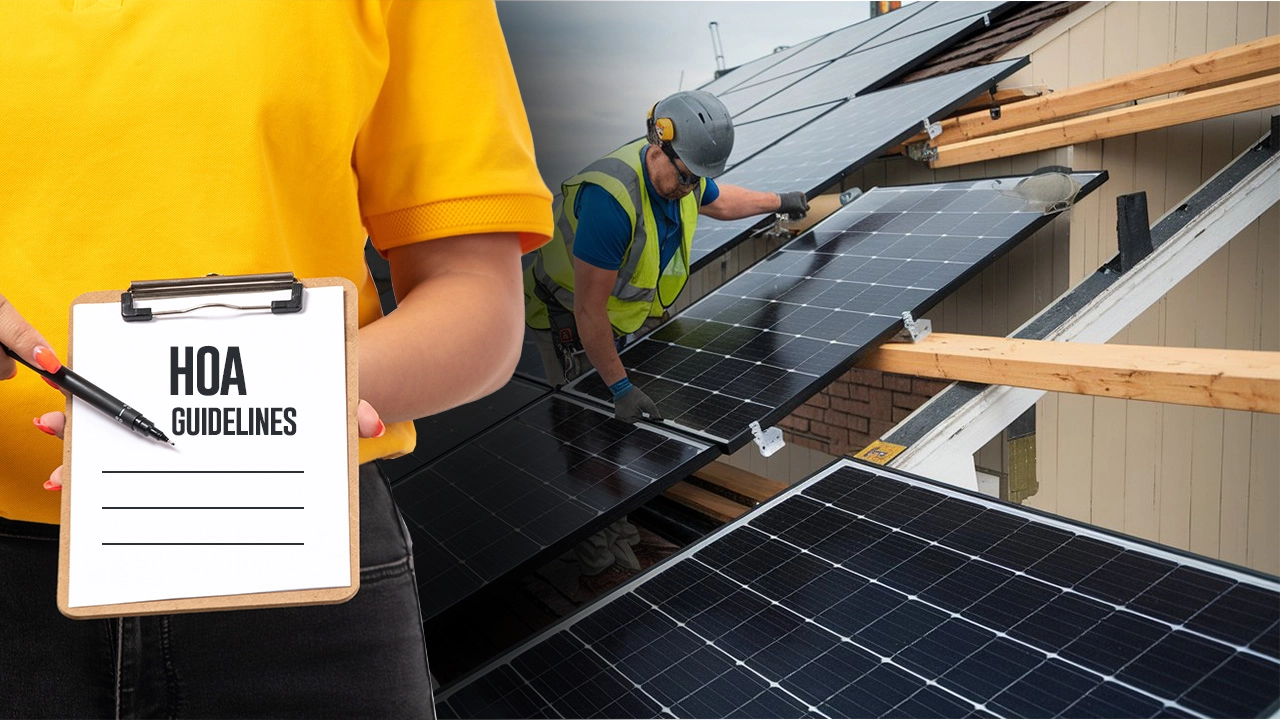- Updated On: March 19, 2025
Solar Panel Shading: All You Should Know to Minimize its Impacts on PV Performance
Every solar homeowner wants to maximize the benefits of a home solar system by producing excess electricity and gaining a high return on investment. One of the key factors that impact the performance of a PV system is solar panel shading. Solar experts say, “A homeowner may lose up to 40% of their solar capacity due to shading on solar panels”. A solar energy system performs efficiently when it receives maximum sunlight. So, even partial shading of panels can impact your rooftop system performance leading to less power generation. However, there are ways to tackle this power loss to ensure maximum power generation and savings.
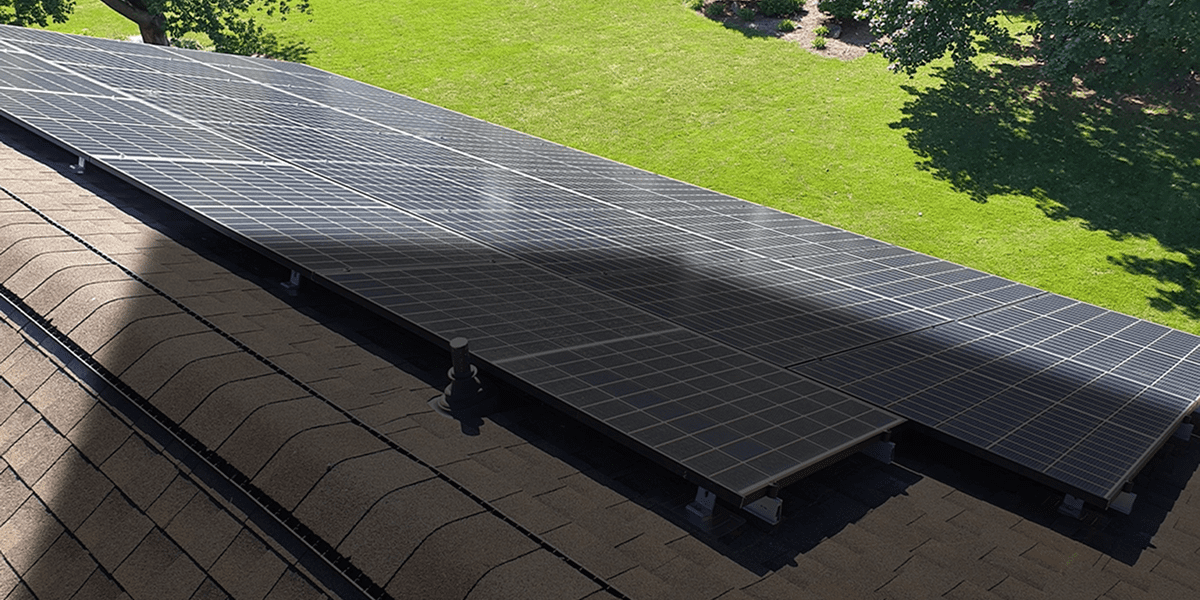
To help you reduce the shading effect, we will highlight the types of shades and explore the best strategies to mitigate solar panel shading in our article.
What is solar panel shading?
One of the most important factors that can affect the solar panels’ performance is shading. Even a small shade can lower the energy output of a solar array. Several sources may cast shade on solar panels like trees and vegetation, nearby buildings, and roof structures (chimneys, vents, and antennas). There might be temporary obstructions like snow, leaves, bird droppings, and self-shading from other panels in the array. The effects of solar shading are more than just reducing sunlight in the shaded area. As solar cells within a panel and panels within an array are interconnected, the shading effect may lower the overall system efficiency more than expected from a shaded area.
What are the different types of shading on solar panels?
While installing solar panels for your home, you need to consider the different types of shade that may affect the system’s efficiency. These include:
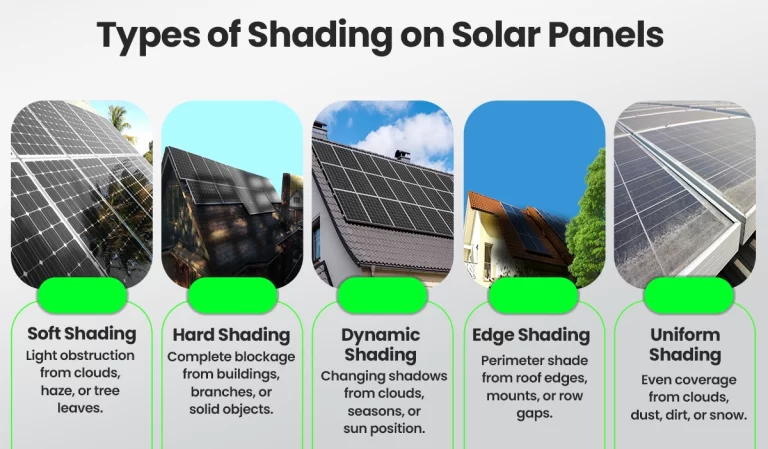
• Soft Shading
Soft Shading occurs when an object partially blocks sunlight and reduces its intensity. Light cloud cover, pollution or haze in the atmosphere, and tree leaves are a few examples. In most cases, soft shading causes a consistent drop in power output throughout the impacted cells or panels.
• Hard Shading
When some parts of a solar panel are entirely blocked from sunlight, it is called hard shading. Examples include nearby buildings, dense tree branches, and solid things like satellite dishes or chimneys. This type of shade may have serious consequences like completely shutting down strings of panels or cells.
• Dynamic Shading
Dynamic shading varies according to the season or during the day like shadows cast by shifting clouds, seasonal variations in tree foliage, and shades that change with the sun’s position. Forecasting dynamic shading is challenging and requires advanced system design and technology.
• Edge Shading
While often unavoidable, edge shading can be mitigated with good solar system design. This type of shade affects the perimeter of solar arrays and is caused by roof edges and parapets, mounting gear, and self-shading from adjacent rows in large installations.
• Uniform Shading
Uniform shade impacts the entire solar array equally. The factors include heavy cloud cover, dust or dirt accumulation, and snow cover. However, uniform shading often doesn’t cause the same disproportionate power losses as partial shading.
How to reduce solar shading losses?
When installing solar panels, shading is a major barrier that should be considered. A well-designed system, tree removal, or the installation of DC power optimizers can often overcome it.
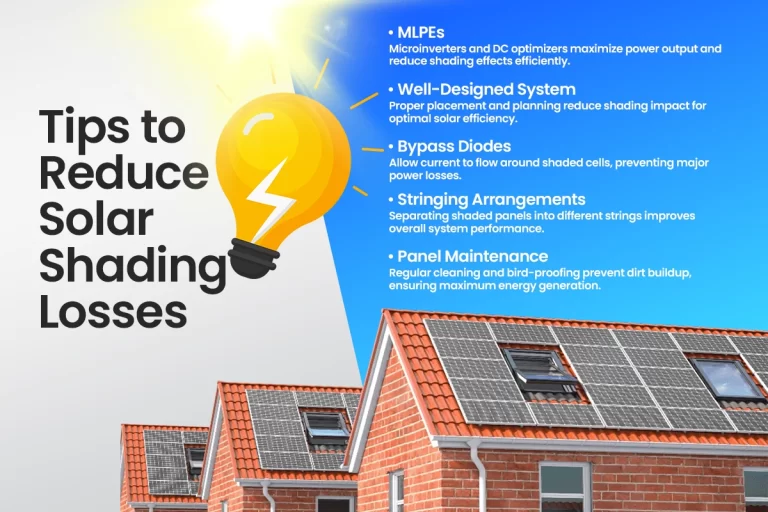
1- Module-Level Power Electronics (MLPEs):
To improve your home solar system’s performance in shaded conditions, it is preferable to use MLPEs, connected to individual modules. Microinverters and DC optimizers are examples of MLPEs. These devices also offer other advantages like module-level monitoring and mismatch mitigation.
DC Optimizers: A DC optimizer maintains maximum power without affecting the working of other solar modules by adjusting its output voltage and current. For instance, it increases the output current of a shaded module that generates electricity with a lower electrical current to make it equal to the current passing through the unshaded modules. As a result, the output of other solar modules is not impeded and the shaded PV module can generate the same electricity.
Microinverters: A microinverter can be attached to each PV panel to convert its output from DC to AC. This eliminates the need for a single solar inverter to manage all of the solar panels in a system. Each microinverter has an MPPT, and since it is connected in parallel, each panel will operate at its maximum power without affecting the other PV modules.
2- Well-Designed System:
The system design plays a vital role in mitigating shading effects in a system. A local solar expert like Solar SME understands all the tips and tricks to tailor a shade-proof home solar system for you. It is important to determine when, how long, and how much power production will be reduced due to solar panels in the shade.
3- Bypass Diodes:
Bypass diodes enable the electrical current to “bypass” shaded areas of the solar module. It gives a covering to the shaded cell string by the greater current of the unshaded cell strings. Each panel has a single or three bypass diodes that serve as a diversion from the blockage.
4- Stringing Arrangements:
A shaded PV module will reduce the output of a whole string. However, a shaded panel in a string will have no impact on a parallel series’ power output. Thus, by placing the shaded modules in separate strings, the maximum total power generation of the solar array can be obtained. It is feasible to connect the panels in parallel series by using microinverters.
5- Maintaining Your Solar Panels:
By converting the panels to bird-proofing, you can help keep birds from getting under your system. Your solar panels will be free of dust, pollution, leaves, and tree sap if you clean them at least once a year. It is important to remember that unclean panels have an equal impact on shading.
To combat shading and boost overall system efficiency, the industry is always innovating new solar technology. The development of perovskite solar cells, 3D solar structures, and advanced tracking and concentration systems will promise to revolutionize how we approach shading in solar energy systems. Moreover, it is advised to choose a trusted solar installer for your solar installation to reduce solar power losses.
Related Articles:
Solar insurance gives homeowners extra assurance that the system they invested in will produce energy as expected. Here’s a guide to everything else it does.
In the United States, if you reside in a subdivision, planned community, or a building, you may be a part of the Homeowners Association, also known as HOA.
Choosing a solar panel system for your home, you’ll typically encounter two main options: off-grid and on-grid (also known as grid-tied) solar systems.

